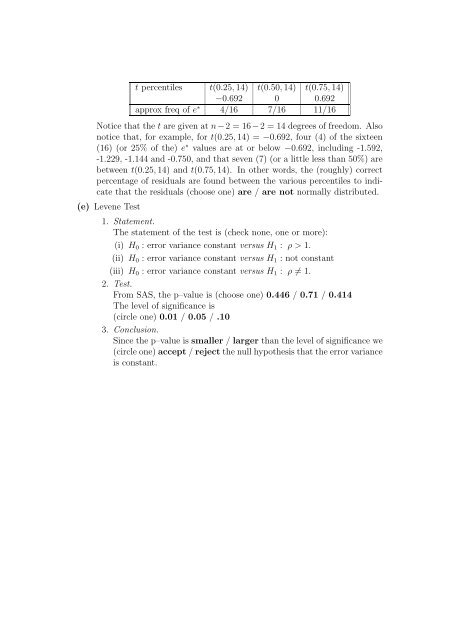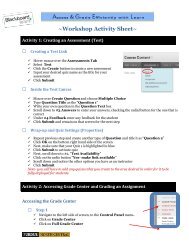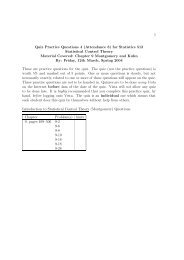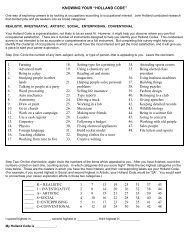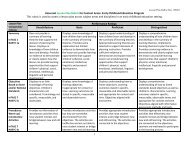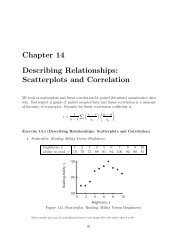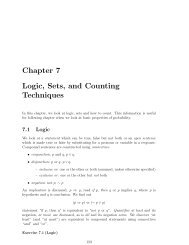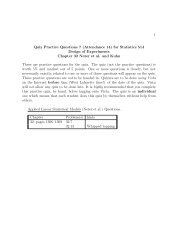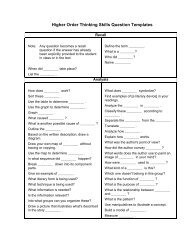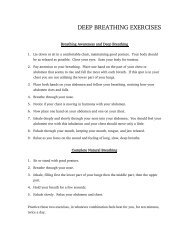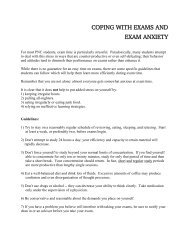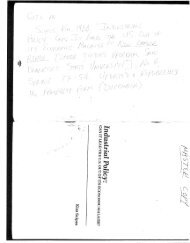Homework 2 (Attendance 3) for Statistics 512 Applied Regression ...
Homework 2 (Attendance 3) for Statistics 512 Applied Regression ...
Homework 2 (Attendance 3) for Statistics 512 Applied Regression ...
Create successful ePaper yourself
Turn your PDF publications into a flip-book with our unique Google optimized e-Paper software.
t percentiles t(0.25, 14) t(0.50, 14) t(0.75, 14)−0.692 0 0.692approx freq of e ∗ 4/16 7/16 11/16Notice that the t are given at n − 2 = 16 − 2 = 14 degrees of freedom. Alsonotice that, <strong>for</strong> example, <strong>for</strong> t(0.25, 14) = −0.692, four (4) of the sixteen(16) (or 25% of the) e ∗ values are at or below −0.692, including -1.592,-1.229, -1.144 and -0.750, and that seven (7) (or a little less than 50%) arebetween t(0.25, 14) and t(0.75, 14). In other words, the (roughly) correctpercentage of residuals are found between the various percentiles to indicatethat the residuals (choose one) are / are not normally distributed.(e) Levene Test1. Statement.The statement of the test is (check none, one or more):(i) H 0 : error variance constant versus H 1 : ρ > 1.(ii) H 0 : error variance constant versus H 1 : not constant(iii) H 0 : error variance constant versus H 1 : ρ ≠ 1.2. Test.From SAS, the p–value is (choose one) 0.446 / 0.71 / 0.414The level of significance is(circle one) 0.01 / 0.05 / .103. Conclusion.Since the p–value is smaller / larger than the level of significance we(circle one) accept / reject the null hypothesis that the error varianceis constant.


